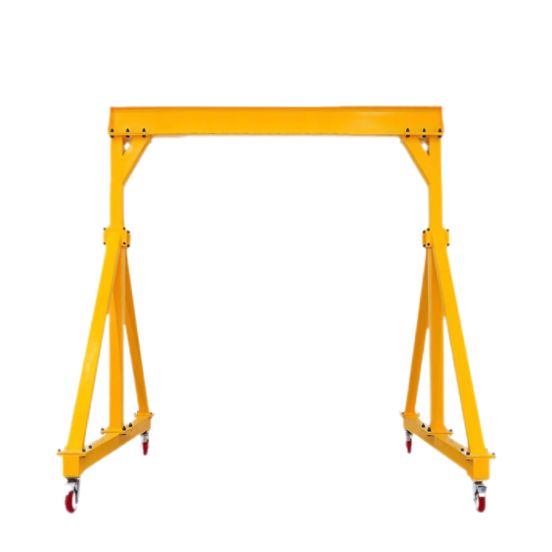What Are Roles and Responsibilities During Crane Operations?
2025-01-13
Crane operations involve several roles and responsibilities to ensure safety, efficiency, and compliance with industry regulations. Here’s an overview of the key personnel involved and their respective duties:
1. Crane Operator
The crane operator is directly responsible for operating the crane safely and effectively.
Key Responsibilities:
- Perform pre-operational inspections to ensure the crane is in good working condition.
- Operate the crane within the manufacturer’s specifications and load limits.
- Follow instructions from the signal person or lift supervisor.
- Monitor environmental conditions (e.g., wind speed) that may impact operations.
- Stop operations if unsafe conditions arise.
- Maintain communication with ground personnel using standardized signals or communication devices.
2. Lift Supervisor
The lift supervisor oversees the entire lifting operation and ensures it is carried out safely and efficiently.
Key Responsibilities:
- Plan and coordinate lifting activities.
- Ensure that all personnel involved are adequately trained and competent.
- Assess and mitigate risks associated with the lift.
- Verify that the load, lifting equipment, and rigging are within safe limits.
- Ensure compliance with regulations and safety standards.
3. Signal Person (Signaler or Banksman)
The signal person communicates with the crane operator to guide movements during operations.
Key Responsibilities:
- Use standardized hand signals, voice commands, or communication devices to direct the crane operator.
- Ensure a clear and unobstructed view of the load and the surrounding area.
- Alert the operator and other personnel to potential hazards.
- Maintain constant communication with the operator, especially during blind lifts.

4. Rigger
The rigger prepares and secures the load to be lifted, ensuring it is stable and balanced.
Key Responsibilities:
- Select and inspect rigging equipment, such as slings, chains, and hooks, for damage or wear.
- Attach rigging equipment to the load and crane correctly.
- Calculate load weights and ensure proper load distribution.
- Signal the crane operator for initial test lifts to confirm balance and stability.
5. Safety Officer
The safety officer ensures all crane operations comply with safety regulations and best practices.
Key Responsibilities:
- Conduct safety audits and inspections of the crane and site.
- Identify and mitigate potential hazards.
- Ensure that emergency procedures are in place and understood by all personnel.
- Investigate incidents and provide recommendations for improvement.
6. Site Manager
The site manager oversees all activities at the worksite, including crane operations.
Key Responsibilities:
- Coordinate crane activities with other worksite operations.
- Allocate resources, including personnel and equipment.
- Approve lift plans and risk assessments.
- Ensure all workers follow site-specific safety rules and regulations.
7. Maintenance Technician
The maintenance technician ensures the crane and associated equipment are in good working order.
Key Responsibilities:
- Perform regular inspections and maintenance on cranes and lifting equipment.
- Address mechanical issues or malfunctions promptly.
- Keep records of inspections, repairs, and maintenance activities.
8. Load Handler
The load handler assists in the movement and placement of the load.
Key Responsibilities:
- Secure the load during lifting and placement.
- Ensure the area around the load is clear of obstructions and personnel.
- Assist the rigger and signal person as needed.
9. Emergency Response Team
The emergency response team acts in case of accidents or emergencies during crane operations.
Key Responsibilities:
- Be prepared to respond to incidents such as load drops, equipment failure, or injuries.
- Provide first aid and coordinate with medical services if necessary.
- Assist in evacuating personnel and securing the site.
General Responsibilities for All Personnel:
- Adhere to safety standards and guidelines, such as OSHA regulations.
- Participate in training and safety drills.
- Report hazards, defects, or unsafe practices to the relevant authority.
- Wear appropriate personal protective equipment (PPE), such as helmets, gloves, and safety boots.
Conclusion
Safe crane operations require teamwork, clear communication, and strict adherence to safety protocols. Each role has a critical part to play in ensuring that lifting activities are conducted without incident, protecting both personnel and property.
Tianjin Fuyaolai Technology Co., Ltd. is a professional sales and service provider of industry Crane products. Its product series are complete, reliable in quality, and stable in performance. Cranes are widely used in construction, mineral processing, shipping, metal processing, aerospace and other fields.Visit our website at www.fuyaolaivalve.com to learn more about our products. For inquiries, you can reach us at sales@fylvalve.com.



